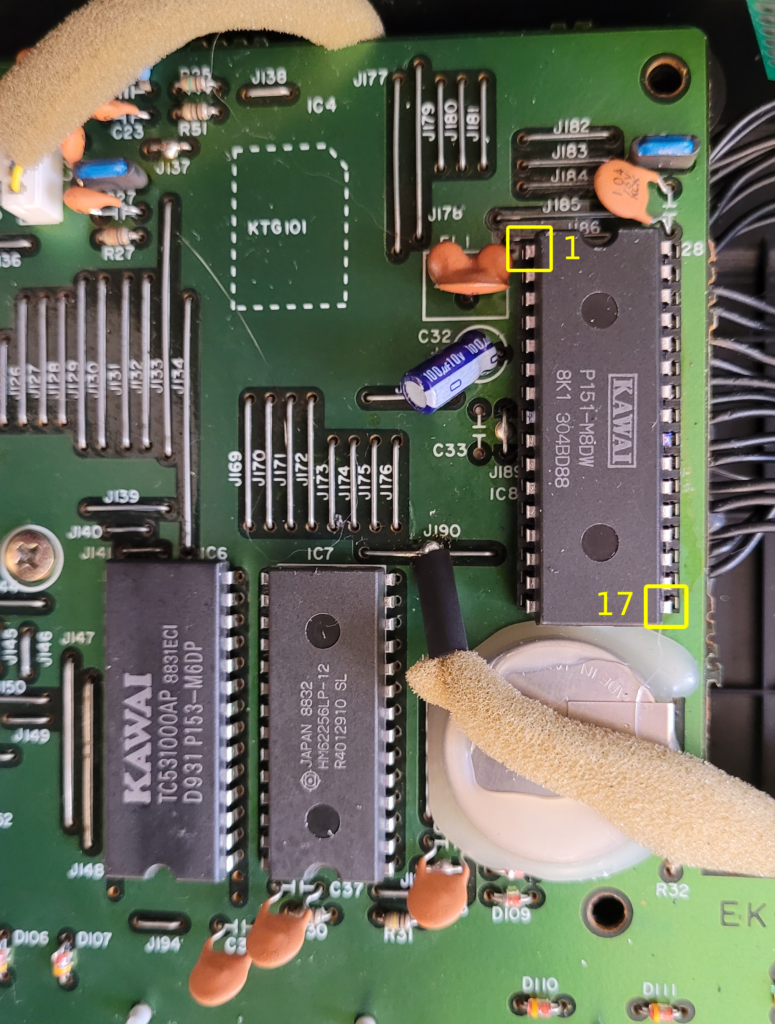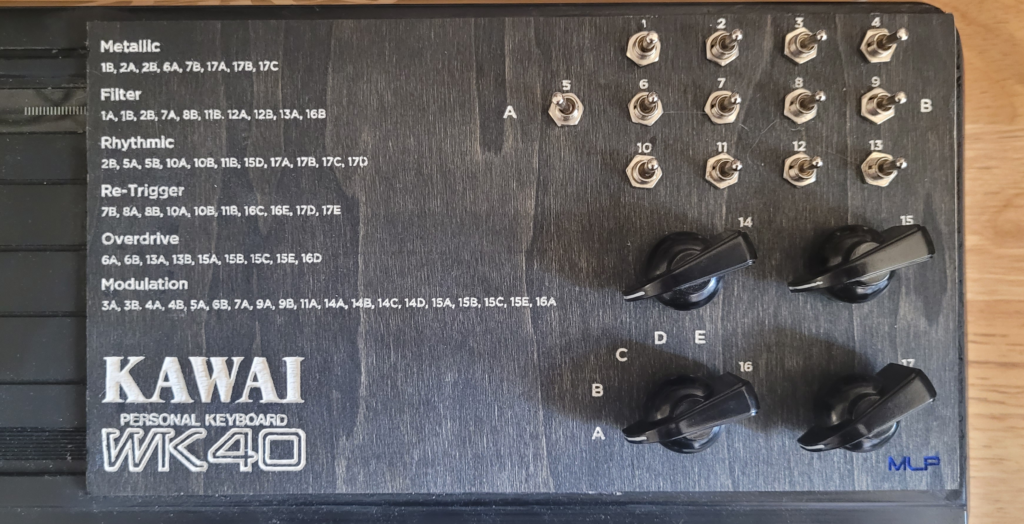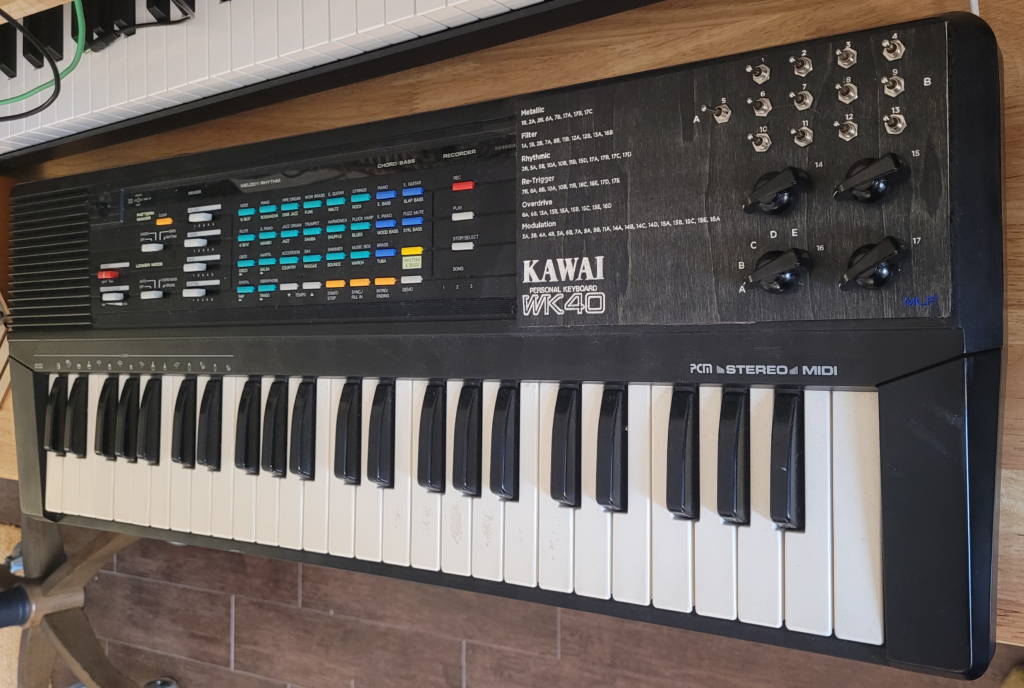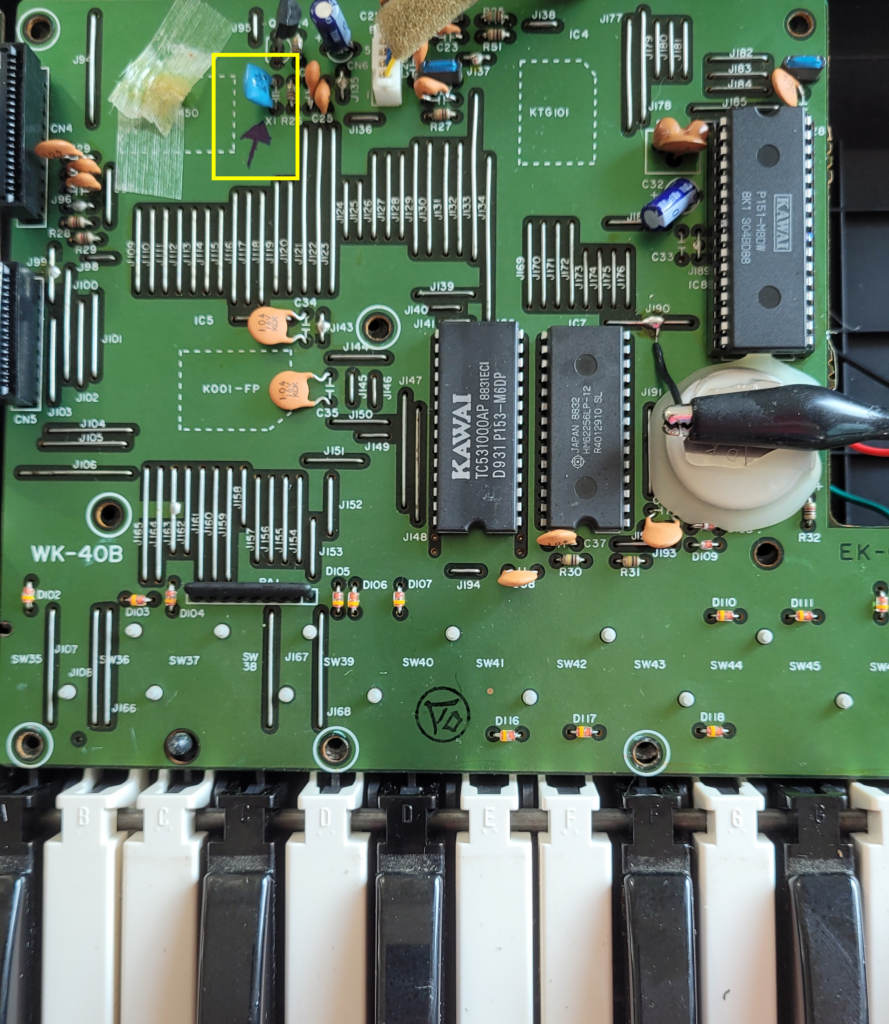Bending Guide

Learnings
- It didn’t occur to me until after the case was closed up that I should have documented what effects are associated with each specific bending point. This is something I plan to do for future bends.
- The rotary switches I used for this build have an enormous footprint. I should have done a better job verifying dimensions before ordering.
- I also assumed that rotary switches would save a lot of space on the console, which didn’t really happen, due to their under-the-hood size.
- Don’t get so excited about MIDI next time. I’ll wait until after I’ve tested the functionality before dreaming of how I’ll use it.
Built from: Kawai WK40
Number of bends: 46
Description: “Tentative Rebirth” is more a reflection of the process and less a reflection of the outcome. Many years ago, circuit bending was a regular part of my explorations of sound and sound production. When I made the decision to dip my toes back in the pool, I had some really clear goals: 1. I wanted stable, reproducible results and 2. I wanted musically useful results.
Not that there’s anything wrong with glitchy and astable, it’s just not where I’m at the moment.
With these goals in mind, and a fortuitous eBay listing in sight, I set out to see if there was any love left to be found in circuit bending. And there’s nothing like a rousing success to reignite the flames of love.
In this particular build, I found an enormous amount of success in a very small area of the board. Specifically, all around the P151-M8DW chip. I got interesting results from connecting practically every pin on this chip to practically any other pin on the chip. Some were more interesting than others. Some were nearly identical in sound.
Needing a way to edit down to a manageable amount of pins, I imposed a few additional rules on this build: 1. Any bend worth saving needed to affect more than a single voice and 2. Any bend worth saving had to be stackable with at least one other bend (I.e., the bend had to play well with other bends).
In the end, I found 46 distinct bends that fit all of our defined criteria.
My prevailing opinion is that patch bays aren’t the right interface for circuit bent instruments, so I opted for a console of toggle and rotary switches. In my experience, this is easier to navigate while performing, and it reduces dead patches and bend combinations that will cause the keyboard to crash.
It also allowed me the opportunity to include a bend reference, right on the keyboard.

The bends that made the cut were categorized as Metallic, Filter, Rhythmic, Re-Trigger, Overdrive and Modulation. Many of these, admittedly, are very similar, but in variations. For example, one bend might re-trigger a sound once, where another bend will re-trigger the sound twice. Since both of these scenarios have different use cases, it made sense to keep both.

Some additional notes about the keyboard
- It has stereo output, but the sounds are not true stereo. They are mono sounds, with a subtle panning modulation of the stereo field volume levels, so it wavers slightly in the stereo field, simulating a stereo sound.
- The MIDI implementation is weird, by modern standards. You can send MIDI to and receive MIDI from the keyboard. But, the sound output uses default MIDI sounds, not the sound bank available from the buttons on the keyboard. For example, if you send a MIDI sequence, it will play that sequence using the default MIDI piano sound, even though manually pressing the keys results in output of the sound selected from the sound bank buttons.
I briefly contemplated a reclocking mod, but ultimately felt it wasn’t necessary. If reclocking is your speed (Dad Joke™), here’s the resonator that I intended to try it on:

I only scratched the surface of the circuit board (figuratively) when exploring for this build. There could, potentially, be a wealth of additional bends waiting to be discovered.
Did you build this? Let us know in the comments below!

Leave a Reply